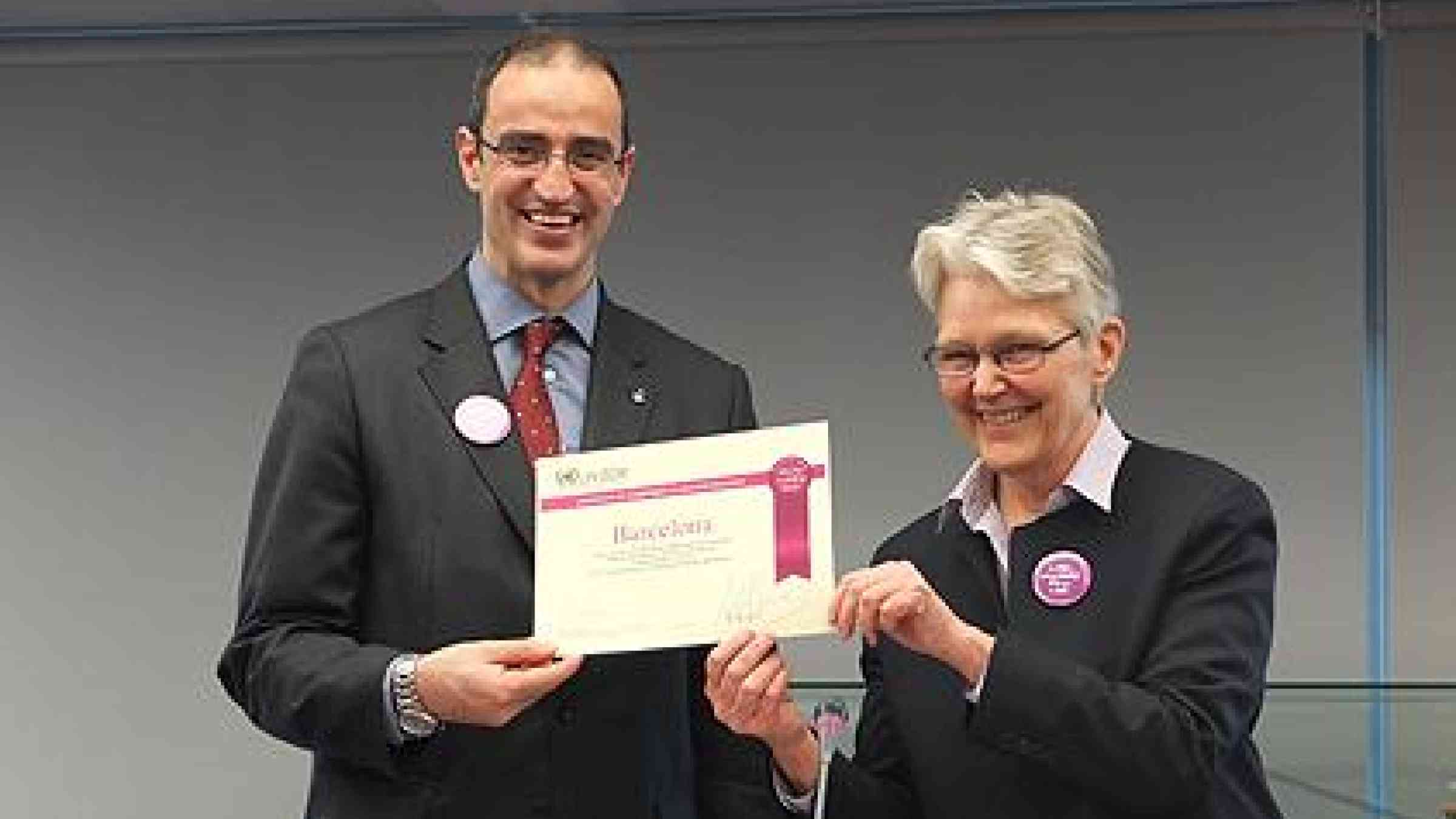UN recognizes Barcelona as role model city

Special Representative of the Secretary-General for Disaster Risk Reduction, Margareta Wahlström and the Vice Mayor of the City of Barcelona, Antony Vives during the the official signing ceremony in Barcelona, 4 April, 20013
4 April 2013, BARCELONA – Five years after energy black outs and major floods exposed serious weaknesses in the city’s infrastructure and services, the Spanish city of Barcelona was recognized today by the United Nations as a role model for urban resilience in recognition of its efforts to reduce the vulnerability of critical infrastructure and services.
The head of the UN Office for Disaster Risk Reduction (UNISDR), Margareta Wahlström, today welcomed the city into UNISDR’s Making Cities Resilient Campaign. "The work of the Mayor and citizens of Barcelona to protect and upgrade critical infrastructure, and to ensure that continuous access to services in the event of disaster, make them the very example of resilience. Barcelona's 'City Protocol' is a good model for local governments seeking to take action to make their cities safer and more resilient.”
Barcelona joined the Campaign at a ceremony hosted today by the city’s Vice Mayor, Antony Vives. The Mayor, Xavier Trias said in a communiqué: “Barcelona aims to become an international model in terms of urban resilience. The city, therefore, not only adheres to the campaign but will also host the headquarters of the programme being developed by UN-Habitat in order to promote tools and procedures approved worldwide to cope with adverse situations, often linked to the impact of climate change on cities. We will offer UN-Habitat our own municipal expertise to develop solutions in areas such as urban design, mobility, prevention and management of basic urban services. Because for us prevention and the key roles played by civil protection, humanitarian aid and emergency management are crucial.”
The former Olympics host city is currently hosting a conference of more than 50 experts in urban risk reduction, with a focus on integrating risk reduction principles into urban planning practices and systems, and improving cities’ resilience to natural hazards, such as floods, earthquakes, and the impacts of climate change.
Situated between the sea and mountains, Barcelona’s location gives it prime exposure to floods and other natural hazards, as well as increasing its vulnerability to the impacts of climate change. Barcelona’s focus on resilience began in earnest in 2008, following a serious energy blackout in addition to major floods that exposed weaknesses in the city’s infrastructure and services.
The events triggered the basis for Barcelona’s “City Protocol”: http://cityprotocol.org, a comprehensive resilience programme that involves all sectors of local government, as well as citizens’ groups and private industry. Eight months ago, Barcelona established a “Resilience Section” of the City Council under the direction of the Division of Infrastructure and Urban Coordination, which is leading a series of projects to safeguard Barcelona’s transport, energy and other critical systems.
Barcelona joins nearly 1,400 Campaign cities around the world, which have pledged to take steps to build their communities’ resilience according to the Ten Essentials for Making Cities Resilient checklist: http://www.unisdr.org/campaign/resilientcities/toolkit/essentials, developed by UNISDR and its partners as a practical guide to help local governments reduce urban risk.
Explore further
Also featured on
Is this page useful?
Yes No Report an issue on this pageThank you. If you have 2 minutes, we would benefit from additional feedback (link opens in a new window).